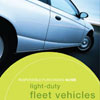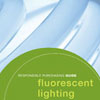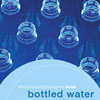#1 plastic
|
see "polyethylene terephthalate" |
#2 plastic
|
see "high density polyethylene" |
#3 plastic
|
see "vinyl/polyvinyl chloride" |
#4 Plastic
|
see "low density polyethylene" |
#5 plastic
|
see "polypropylene" |
#6 plastic
|
see "polystyrene" |
#7 plastic
|
plastic other than the six most common, often used in bottles and bags |
Acid rain
|
acidic compounds caused by pollutants such as sulfur dioxide (SO2) and nitrogen oxides (Nox) that collect in the atmosphere, are absorbed by clouds, and create acidic rainfall |
Acute toxicity
|
capable of producing illness from a single dose or minimal exposure |
Advanced hybrid
|
a hybrid-electric vehicle (HEV) that uses advanced energy recovery technologies (e.g., regenerative braking) and is capable of driving in all-electric mode, see also hybrid-electric vehicle and hollow hybrid |
Architectural paint
|
coatings intended for, but not restricted to, on-site application to interior and exterior surfaces of residential, commercial, institutional or industrial buildings |
B20
|
biofuel composed of 20% biodiesel and 80% gasoline, see also biodiesel |
Ballast
|
device used with an electric discharge lamp to obtain necessary circuit conditions to start and operate it |
Baseline
|
basic information gathered before a program begins that is used later to provide a comparison for assessing program impact |
Bioaccumulate
|
process whereby harmful substances concentrate or magnify as they move up the food chain |
Biobased
|
products composed in whole or in significant part of biological products, forestry materials, or renewable domestic agricultural materials, including plant, animal, or marine materials, generally safer for the environment than petroleum-based counterparts, and usually biodegradable or recyclable |
Biodegradable
|
ability of a substance to decompose in the natural environment into harmless materials |
Biodiesel
|
a substitute for petroleum based diesel fuel that is produced from agricultural crops such as soybeans |
Brominated flame retardants
|
hormone disrupting chemicals such as polybrominated diphenyl ethers (PBDEs) that are added to computers and office electronics to reduce the risk of fire; see also polybrominated biphenyls (PBBs) and polybrominated diphenyl ethers (PBDEs). |
Cadmium
|
toxic metal included in electronic equipment |
Car-sharing
|
a system providing simple, regular access to vehicles without personal ownership; typically run by a for-profit company such as FlexCar and ZipCar |
Cellulosic ethanol
|
a high-energy yielding ethanol fuel produced from cellulose, a naturally occuring carbohydrate commonly found in plant cell walls; cellulosic ethanol has a better lifecycle energy and emissions profile than corn ethanol but is currently more expensive to produce. See also ethanol |
CFL
|
see "compact fluorescent lamp" |
Chlorine free
|
manufactured without chlorine or chlorine derivatives |
CNG
|
compressed natural gas; used as vehicle fuel, see also NGV |
Compact fluorescent lamp (CFL)
|
fluorescent light bulb designed to substitute incandescent light bulbs, see also "incandescent" and "fluorescent lighting" |
Cost-per-copy contract
|
contract where an organization purchases copy services rather than copying equipment; the contractor is responsible for providing office electronics, supplies, maintenance, training, and more, depending on the terms of the contract. |
Daylighting
|
utilizing sunlight to illuminate indoor space |
Dioxins
|
chemical compounds classified as persistent, bioaccumulative, and toxic (PBTs) by the EPA |
Diphenyl ethers (PBDEs)
|
persistent and bioaccumulating chemicals used as flame retardants in plastics and polymer resins, see also polybrominated biphenyls (PBBs) |
E85
|
vehicle fuel type composed of 85% ethanol and 15% gasoline, see also "ethanol" and "flex-fuel" |
EcoLogo
|
multi-attribute environmental certification managed by the Government of Canada |
Endocrine disruptor
|
chemical that interferes with the normal function of a living organism's endrocrine system |
End-of-life management
|
process by which products are disposed of after their term of useful service expires |
Energy efficient
|
product that performs more work per unit of energy as compared to all similar products |
ENERGY STAR
|
energy efficiency certification manged jointly by the U.S. Environmental Protection Agency and Department of Energy |
Environmentally preferable
|
products and services that have a lesser or reduced effect on human health and the environment when compared to other products and services that serve the same purpose. |
Ethanol
|
fuel type made by fermenting plant sugars; nearly all ethanol produced in the U.S. today are from corn sugars. See also "cellulosic ethanol", "E85", and "flex-fuel" |
Flashpoint
|
minimum temperature at which a liquid gives off a vapor in significant concentration to ignite |
Flex-fuel
|
passenger vehicle with specially designed engine capable of running on E85 or pure gasoline, see also "ethanol" and "E85" |
Fluorescent lighting
|
gas-discharge lamps that require ballasts and use electricity to excite mercury vapor in argon or neon gas, producing ultraviolet light that causes a phosphor to fluoresce, producing visible light |
Fuel economy
|
fuel efficiency; a measure of fuel needed per unit of distance traveled, e.g. miles per gallon |
Furans
|
chemical compounds classified as persistent, bioaccumulative, and toxic (PBTs) by the EPA |
GREENGUARD
|
independent ANSI authorized standards developer focused on indoor air quality |
Greenhouse gas
|
heat-trapping gas in the Earth's atmosphere responsible for global warming; category includes water vapor, carbon dioxide, methane, ozone, CFCs, and nitrogen oxides |
Hazardous substance
|
1. material posing a threat to human health and/or the environment, that can be toxic, corrosive, ignitable, explosive, or chemically reactive 2. substance that must be reported to the EPA if released into the environment. |
Hazardous waste
|
hazardous by-products that can pose a hazard to human health or the environment when improperly managed |
HEV
|
hybrid-electric vehicle, see also "hybrid-electric" |
Hexavalent chromium
|
positive-6 valence chromium, considered a potential occupational carcinogen |
High density polyethylene (HDPE)
|
plastic labeled number 2, used in milk jugs, trashbags, cleaners containers, and vehicle fuel tanks |
Hollow-hybrid
|
vehicle marketed as an HEV but lacking advanced fuel economy features such as regenerative braking and all-electric drive mode, see also hybrid-electric vehicle and advanced hybrid |
Hybrid-electric vehicle
|
fuel efficient vehicle type that combines an internal combustion engine with a battery-powered electric motor and other energy efficiency features |
Idling
|
leaving the engine on while a vehicle is not in use |
Incandescent
|
inefficient technology that produces light by passing an electrical current through a thin filament |
Industrial paint
|
surface coatings including but not limited to, special purpose, factory-applied, automotive, marine, and traffic marking paint |
Lead
|
metal used in electronic equipment that can damage the nervous system and cause blood and brain disorders |
LED
|
light-emitting diode; high efficiency lighting that uses semiconductor technology; aka solid state lighting |
LEED (Leadership in Energy and Environmental Design)
|
a building rating system developed by the US Green Building Council, includes standards for several types of buildings |
Life cycle cost
|
adjusted annual cost of a product that accounts for capital, installation, operating, maintenance and disposal costs |
Low density polyethylene (LDPE)
|
plastic labeled number 4, used in bags and food wrap |
Mercury
|
material used in electronic equipment that causes short term and chronic nervous system impairment to exposed individuals |
Multifunction machines
|
type of office equipment that is able to perform multiple functions such as copying, printing, and faxing |
Natural paint
|
paints made from non-toxic and non-petroleum-derived ingredients like soy, milk, and silicate |
NGV
|
natural gas vehicle; i.e. vehicle fueled by natural gas, see also "CNG" |
Ozone
|
1. ground level pollutant that causes respiratory damange, 2. component of upper atmosphere that prevents ultraviolet sunlight from reaching the earth's surface |
Particulates
|
small particles and liquid droplets that can be inhaled and cause respiratory and heart disease |
PBTs
|
see "persistent, bioaccumulative toxins" |
PCBs
|
see "polychlorinated biphenyls" |
Persistent, bioaccumulative, toxins (PBTs)
|
toxic chemicals that persist in the environment and increase in concentration through the food chain; transferred easily through air, water and land ; EPA list includes 4 chemical groups and 16 chemicals |
PHEV
|
see "plug-in hybrid" |
Plug-in hybrid
|
vehicle type similar to HEV, but with smaller gasoline engine and larger battery pac that can be charged using a standard electrical outlet and provide an all-electric driving range of between 20 and 60 miles; see also hybrid-electric vehicle |
Polybrominated biphenyls (PBBs)
|
a class of flame retardant chemicals added to plastics that can enter the environment but do not degrade quickly or easily, see also diphenyl ethers (PBDEs) |
Polybrominated diphenyl ethers (PBDEs)
|
a class of flame retardant chemicals added to plastics that can enter the environment but do not degrade quickly or easily |
Polychlorinated biphenyls (PCBs)
|
mixtures of up to 209 individual chlorinated compounds (known as congeners) |
Polyethylene terephthalate (PET or PETE)
|
plastic labeled number 1, used in fibers, beverage bottles and liquid containers |
Polypropylene (PP)
|
plastic labeled #5, used in molded parts, packaging and fibers |
Polystyrene (PS)
|
plastic labeled #6 and used in Styrofoam, CD jewel cases, plastic cutlery |
Polyvinyl chloride (PVC)
|
a substance made from vinyl chloride (a known carcinogen) and used in some plastics, see also "vinyl/polyvinyl chloride" |
Post-consumer recycled content
|
material recovered from a consumer product at the end of its life, diverted from waste destined for disposal |
Post-industrial recycled content
|
material generated in manufacturing and converting processes, recovered or diverted from solid waste |
Recovered materials
|
waste materials and by-products that have been diverted from the solid waste stream |
Smog
|
air pollution formed when sunlight reacts with oxides of nitrogen and hydrocarbons |
Source reduction
|
a net reduction in the generation of waste compared to alternatives |
Sprawl
|
the unplanned spread of cities into rural land |
Surface coating
|
a mixture of film-forming materials plus pigments, solvents, and other additives, which includes architectural and industrial paints, stains, varnishes and coatings.
|
Take-back
|
policy whereby equipment can be returned to a manufacturer, distributor or recycler at the end of useful life |
Toxic substance
|
a chemical or mixture that may present an unreasonable risk of injury to health or the environment |
Vinyl/polyvinyl chloride (V)
|
plastic labeled number 3, used in blister wrap, food wrap, and construction and maintenance materials |
VOC
|
see "volatile organic compounds" |
Volatile organic compound (VOC)
|
organic compound that typically vaporizes at room temperature and participates in atmospheric photochemical reactions |






